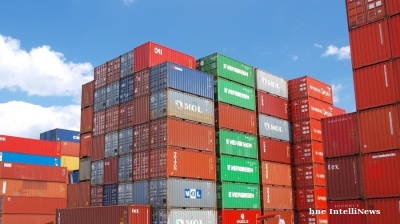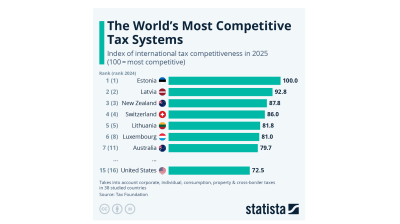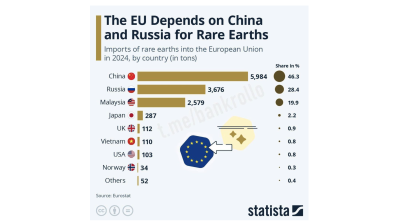Romania’s gross domestic product (GDP) rose by a real 2.4% y/y in Q1, which is the weakest growth in nearly six years, according to detailed statistics office (INS) data released on June 9. The quarterly GDP in Romania thus reached RON216.3bn (€45.1bn) at current prices.
Domestic consumption eased significantly, but — strikingly — net imports rose sharply, and massive amounts of inventory piled up in what seems to be an effect of the sudden interruption of economic activity in mid-March.
Without the lockdown and the disruption in foreign trade in mid-March, the growth would have been slightly stronger (due to stronger consumption pushing up the activity in the services sector after mid-March), but still along the slowdown trend from the average 4.1% growth in 2019. Industrial activity was also hit by the disruption in foreign trade, but it had shown signs of fatigue even before this.
Domestic demand loses momentum but remains main growth driver
The GDP growth was driven by domestic demand that lost momentum to the weakest annual advance in nearly six years. It is possible that the weakest consumption of services and non-food goods in the second half of March contributed to this.
Consumption plus investments would have supported 3.6% GDP growth alone — compared to over 9% y/y in each of the previous three quarters.
It is thus no surprise the domestic supply (GDP) eased to 2.4% y/y from the 3-4% annual advance rates in the previous quarters.
Restoring domestic demand, for consumption and particularly investments, is key to restarting the economy after the coronavirus (COVID-19) shock that disrupted part of the economic activities in Q2. Recovery depends to a large extent on the resumption of other European economies worse hit by the pandemic.
Growth is supported by services, construction and IT&C
The added value generated by industry contracted by 5.9% y/y, while the construction sector expanded by 23% and IT&C by 14.1%. The 5.5% advance in the sector of services to households (including retail, but also horeca), made the most significant contribution to the overall growth, 1.1 percentage points. IT&C contributed 0.9 pp and construction 0.8 pp, followed by professional activities, administrative and support services with 0.7 pp.
The net taxes collected by the government contracted by 0.7% in real terms as the executive returned VAT and other due payments to companies.
Weakest growth in nearly six years
The annual GDP growth seen in Q1 was the slowest performance in nearly six years (since 2Q14). In seasonally and calendar adjusted data, Q1 GDP rose by 0.3% compared to 4Q19, the slowest quarterly growth since 2015.
The figures confirm the flash estimate issued on May 15, but they bring more clarity. INS mentions difficulties related to collecting the data.
The disruption in the economic activity in the second half of March had effects that must be considered when identifying trends.
Three key features of GDP dynamics in Q1
Firstly, the domestic demand for consumption posted the weakest annual growth rate in nearly six years (+3.1% y/y in Q1 compared to +7.7% in Q4). As mentioned, the lockdown after mid-March may have played a key role here.
Secondly, net imports rose to 5.6% of GDP in Q1 (from 3.9% in Q4 last year and 4.4% in Q1, 2019) to the highest value (share of GDP) since 2012. In principle, this means a massive utilisation of foreign resources for domestic use (consumption or investments). But, given the situation, this might partly stand for exports interrupted during the second half of March.
The third feature identified in the detailed Q1 GDP data is the sharp rise in inventory during the quarter: RON7.36bn (€1.5bn, over 3% of the quarter’s GDP). This might be linked to the exports suspended during the second half of March and not necessarily to inefficient production.

Data
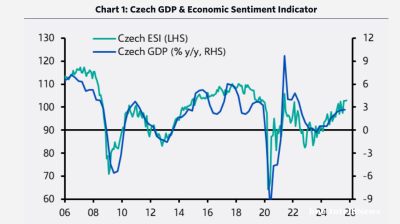
Czech growth accelerates as domestic demand-side pressure builds
The Czech economy delivered an unexpected acceleration in the third quarter, marking a clear shift from its earlier position as a regional underperformer to one of Central and Eastern Europe’s fastest-growing economies.
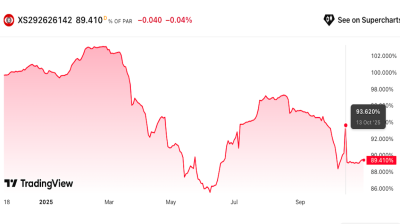
Eurobonds of Istanbul-listed Zorlu units offer attractive yields amid rating downgrades and no default expectation
Debut paper currently offering 14-15% yield.
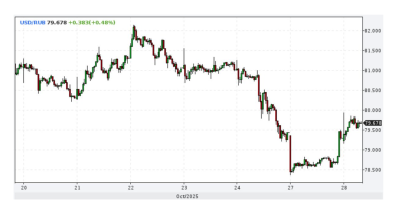
Ruble strengthens as sanctioned oil companies repatriate cash
The Russian ruble strengthened after the Trump administration imposed oil sanctions on Russia’s leading oil companies, extending a rally that began after the Biden administration imposed oil sanctions on Russia in January.

Russia's central bank cuts rates by 50bp to 16.5%
The Central Bank of Russia (CBR) cut rates by 50bp on October 24 to 16.5% in an effort to boost flagging growth despite fears of a revival of inflationary pressure due to an upcoming two percentage point hike in the planned VAT rates.
